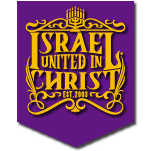Halloween was originally a festival of fire that honored the dead and the powers of darkness. It is celebrated on the evening of October 31, and continues past 12:00 midnight, the start of November 1st which is the beginning of the Christian festival of All Hallows’ Day, now called “All Saints’ Day” which commemorates dead saints and martyrs, and was first introduced in the 7th century. All Saints day’s date was changed from May 13 to November 1, in the 8th century, to make it coincide with and Christianize a pagan festival of the dead.
On All Hallows eve, the pagans hollowed out turnips, rutabagas, gourds, potatoes and beets. They placed a light in them to ward off evil spirits and keep an undead soul named Jack away. These were the original “Jack O’Lanterns”. In the 1800’s a couple of waves of immigrants came to America. These new immigrants quickly discovered that Pumpkins were bigger and easier to carve out. So they used pumpkins for Jack O’Lanterns.
As Celtic pagans converted to the new religion of Christianity, they did not forget their stories of the dead traveling to the afterworld on Halloween, nor did sightings and activities of fairies cease being reported. As more Celtic priests became Christian leaders and pastors; fairies, hobgoblins, vampires, werewolves, and virtually any other myth became the fallen angels of Christianity. The activities of Halloween, the making of charms, divining the future, the practice of magic, and dealing with unclean spirits and demons are explicitly forbidden.
Deuteronomy 18:10: “There shall not be found among you any one that maketh his son or his daughter to pass through the fire, or that useth divination, or an observer of times, or an enchanter, or a witch,”
11: “Or a charmer, or a consulter with familiar spirits, or a wizard, or a necromancer.”
12: “For all that do these things are an abomination unto the LORD: and because of these abominations the LORD thy God doth drive them out from before thee.”
Halloween today, the wearing of costumes, for instance, and the roaming from door-to-door demanding treats can be traced to the Celtic period and the first few centuries of Christianity when it was thought that the souls of the dead were out and around, along with fairies, witches, and demons. Sacrifices and or valuables were offered to satisfy them. The masqueraders went from house to house, singing and dancing. Their idolatrous masks and costumes were a visible representation of the ghosts and goblins that lurked in the night. They would visit the neighboring village for ‘offerings’ which belonged to the dead – or play tricks akin to the legendary destructiveness of witches and imps abroad on this night; i.e. in the past when this celebrator of Halloween came to a house, offerings had to be given in honor of the day generally of something valuable or death and or punishment to the person who gave no tribute. This practice, evolved into the present day ‘trick or treat’ and the masks have been transferred to the children who, in the United States, candy is given to them in the guise of saying “trick or a treat“.
I Corinthians 10:19: “What say I then? that the idol is any thing, or that which is offered in sacrifice to idols is any thing?”
20: “But I say, that the things which the Gentiles sacrifice, they sacrifice to devils, and not to God: and I would not that ye should have fellowship with devils“.
21: “Ye cannot drink the cup of the Lord, and the cup of devils: ye cannot be partakers of the Lord’s table, and of the table of devils.”

